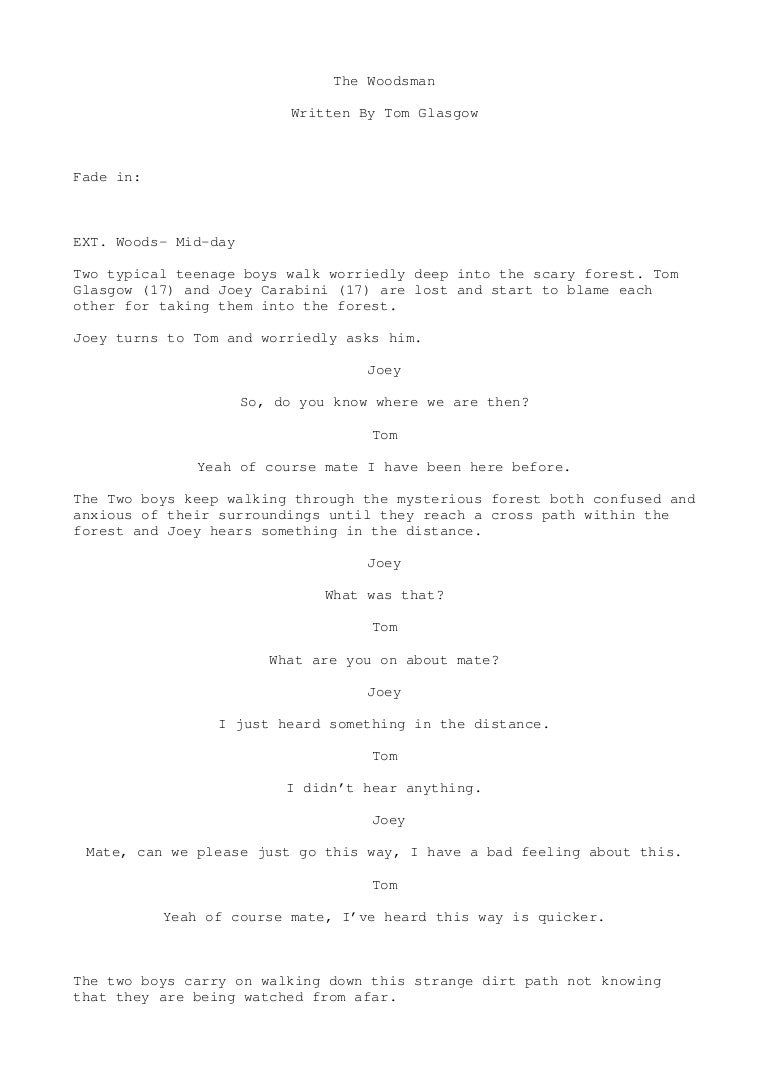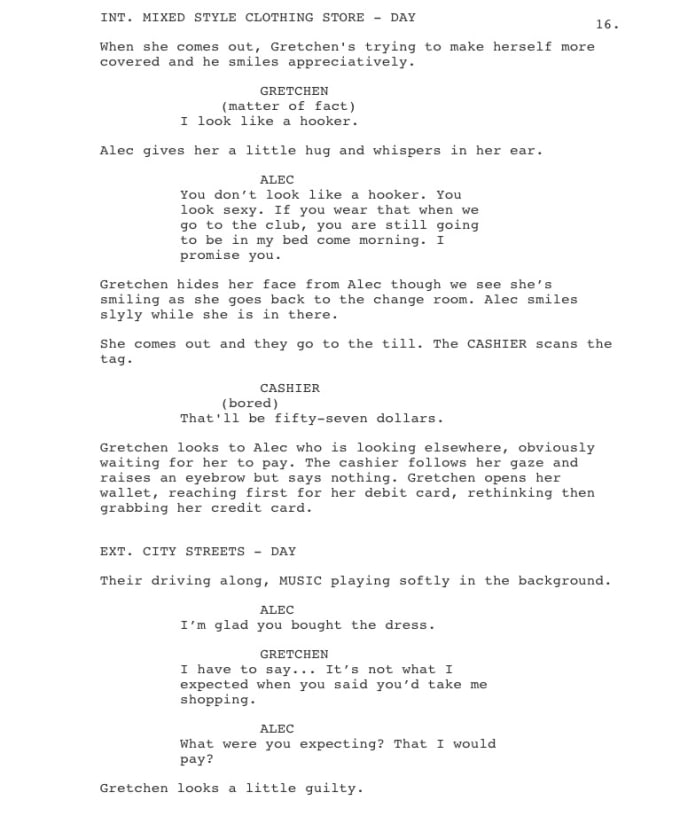
- FINAL DRAFT SCRIPT MANUAL
- FINAL DRAFT SCRIPT REGISTRATION
- FINAL DRAFT SCRIPT SOFTWARE
- FINAL DRAFT SCRIPT DOWNLOAD
- FINAL DRAFT SCRIPT FREE
FINAL DRAFT SCRIPT SOFTWARE
Other Final Draft 10 features include real-time collaboration, an index card view to aid scene arrangement, over 100 templates, and a mobile version (sold separately).įinal Draft writing software has just about everything you need, barring some pre-production tools like storyboards, and shot lists.īut if it’s out of your price range ($249.99 at the time of of this writing) there are other robust options to consider.
FINAL DRAFT SCRIPT DOWNLOAD
It also includes organizational tools like Story Map (for outlining), Beat Board (for beat sheets) and Alternate Dialogue (for storing additional dialogue options).įREE TEMPLATE: Download a Save the Cat style beat sheet template hereĮven if you’ve got a keen sense of writing dialogue, it can a great help to give yourself options later on.

This means you can break down scene elements (actors, wardrobe, props) to feed into production reports later. Its SmartType function remembers scene elements like characters and locations, which you can reinsert as you write.įinal Draft 10 also includes robust tagging and reporting tools. It’s been an industry standard for decades, and has been used by top writers and filmmakers. You can’t discuss screenwriting software without Final Draft 10. Let me know what works for you and what problems you have.Script Writing Software 2. What is your preferred method for working with script notes? Which software do you use? How do you get your script notes back into your script file? However, these are two workflows how you can go back and forth between Final Draft and Scrivener if you want to use both software packages. But I guess since Scrivener gives you so many possibilities to structure your files that that would be complicated to do, if possible at all. My solution in a perfect writer’s world would be to export ScriptNotes only in Final Draft (without the script content) and import them into Scrivener as comments, having them be linked to the corresponding page in your Scrivener script.

FINAL DRAFT SCRIPT MANUAL
It is manual work but you are a lot quicker than going back and forth between both programs to copy the SriptNotes. Now copy every note to the corresponding position in your script as a Scrivener comment.Now open your script scenes in Scrivener and use the split Editor function to have your script and the ScriptNotes report from Final Draft side by side.Copy the whole text and paste it into any Scrivener text file.

It will show you a list of all the notes in your screenplay. Create a ScriptNotes report inside Final Draft (Tools – Reports – ScriptNote Report…).So there is another solution to this, albeit, sadly, not an automatic one. But it would be quite cumbersome having to switch between both programs back and forth multiple times. Of course you could open Final Draft and Scrivener side by side and copy all ScriptNotes from Final Draft to Scrivener to the corresponding position. I want to keep all the research files in the proper structure with my scene files.Ģ: “Import” Final Draft ScriptNotes Report into Scrivener So, if I import the fdx file back into scrivener into one document I have another version of my script, which can get confusing when you begin changing things. I for example have different files inside Scrivener for every scene, each holding different research information underneath. The disadvantage is you may have your own scene structure for writing your screenplay in Scrivener. The advantage of this process: it’s automatic and quick. Inside Scrivener you see them as comments if you click on the comments tab in the inspector. Scrivener will recognise the notes and import them as well.

Import the fdx file into Scrivener like you would any other file (File – Import – Files…). Like everything in life both have their advantages and disatvantages.ġ: Import the Final Draft file into Scrivener I want them accessible at all times.īut you run into a problem there: when you export your script from Scrivener to Final Draft to send the fdx file around you need a way to get your script notes back into Scrivener to continue working on your script. But for writing the script I need a software that can also hold all my research files. When we first launched Gorilla 15 yrs ago, there were really only two choices for screenwriting software: Final. I just use it for printing and sending the script out for notes.įinal Draft does a superb job with formatting a script according to industry standard. Comparing the Most Popular Screenplay Programs.
FINAL DRAFT SCRIPT FREE
Writer’s Guild of America East), it is accessible with any text editor and there is a free reader app available for the iPad.īut I don’t really use Final Draft for screenwriting.
FINAL DRAFT SCRIPT REGISTRATION
The fdx format is very popular because it is used by many production companies, accepted for script registration (e.g. Final Draft is pretty much THE screenwriting standard software around.


 0 kommentar(er)
0 kommentar(er)
